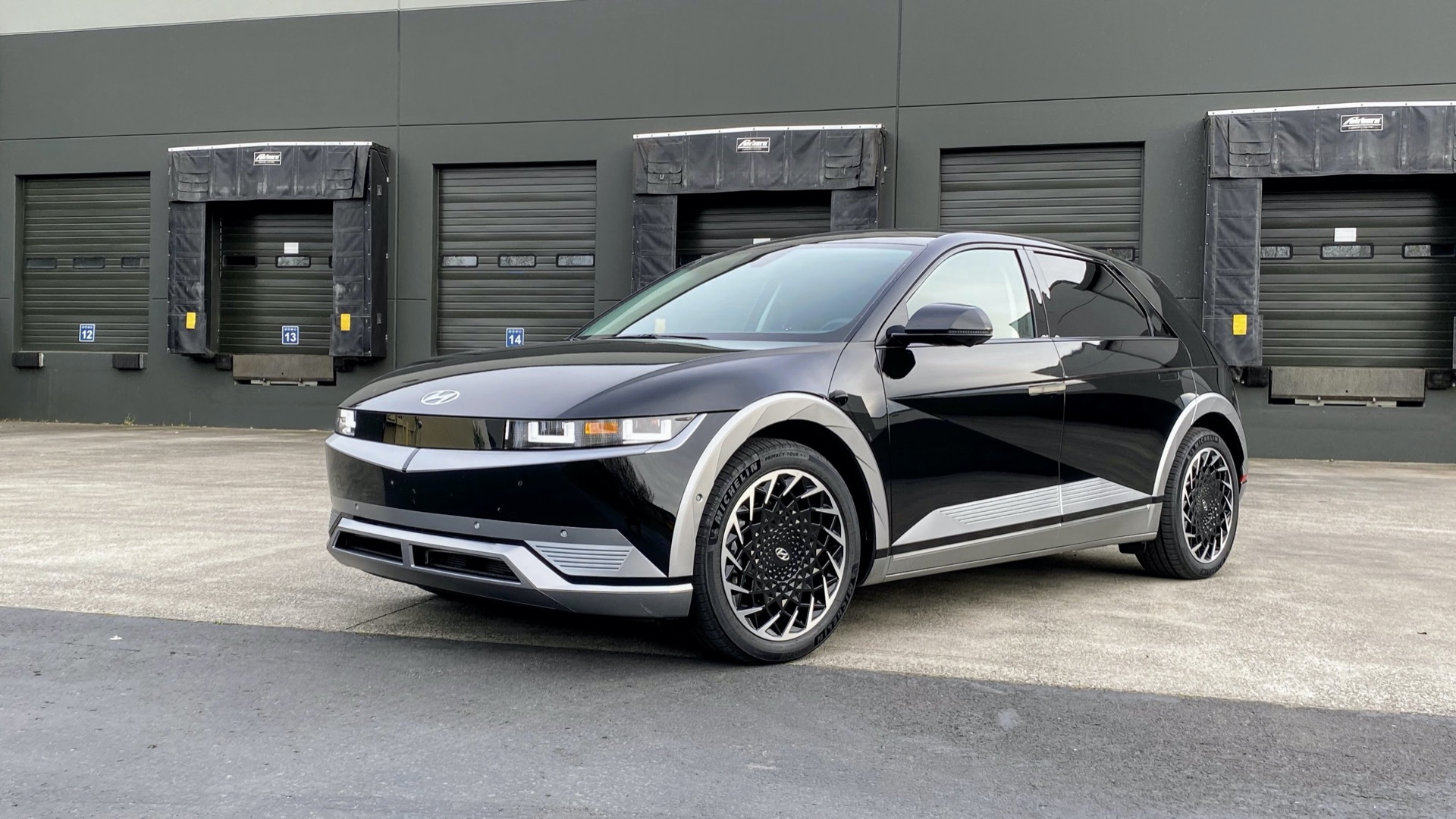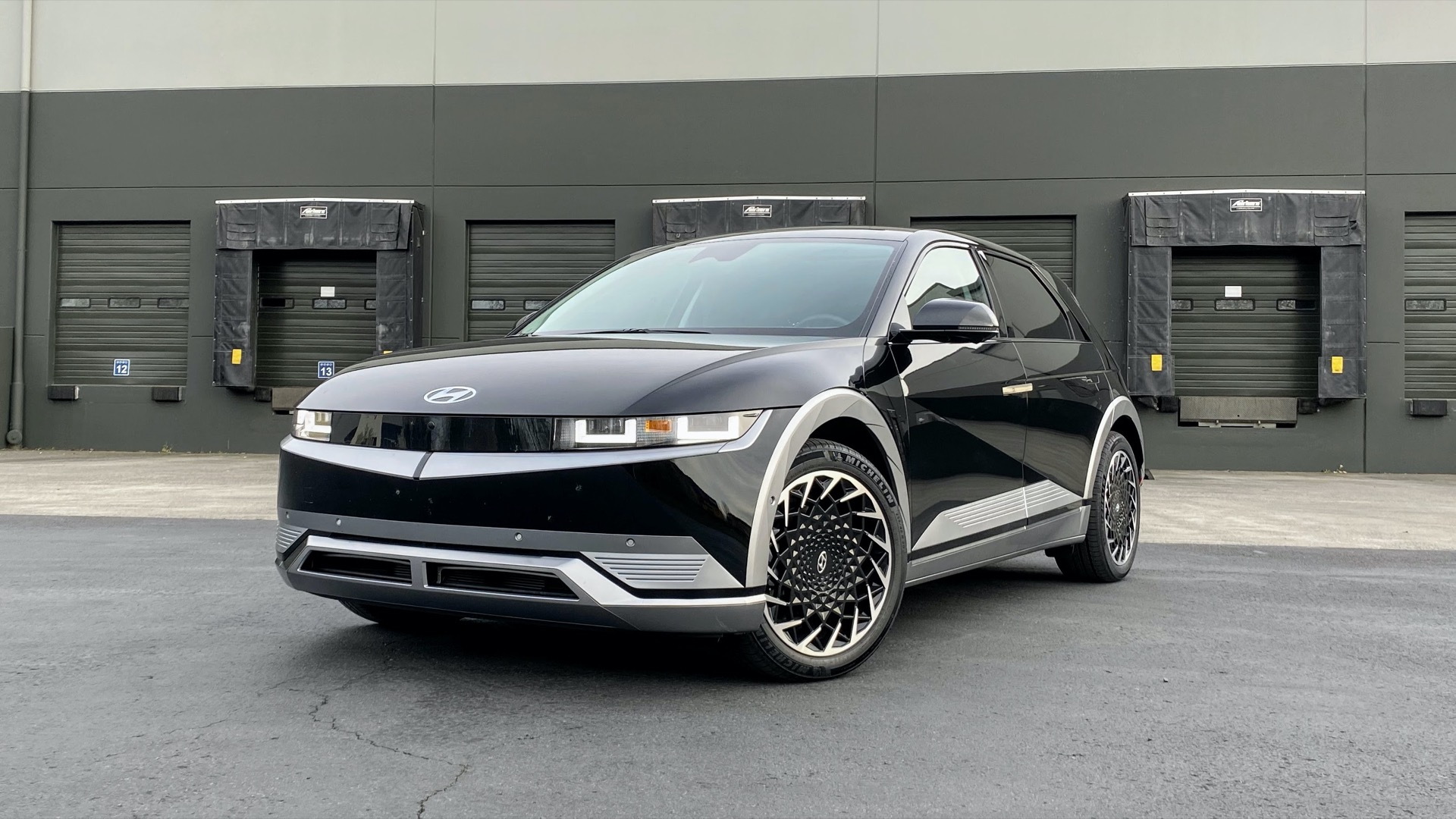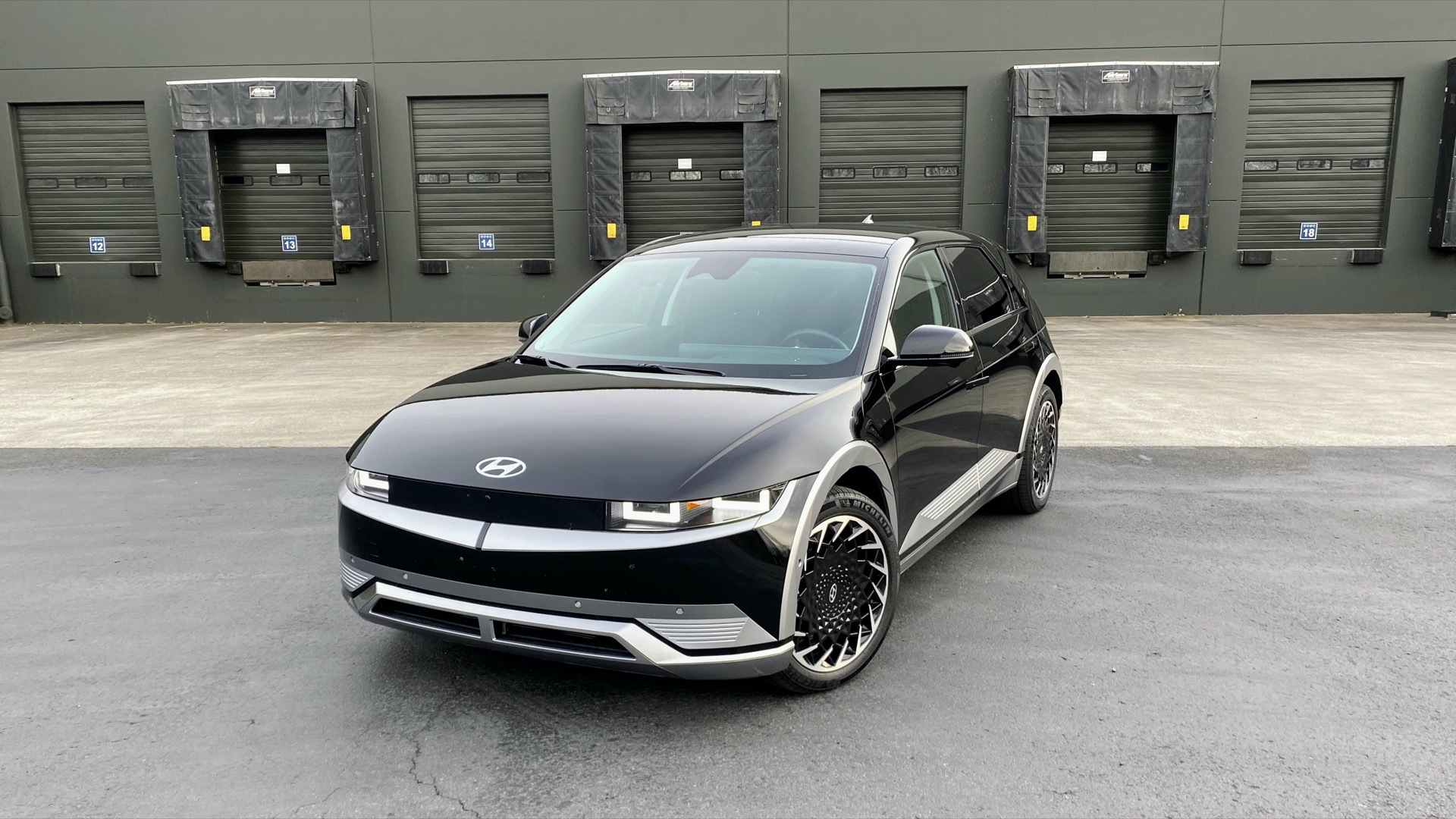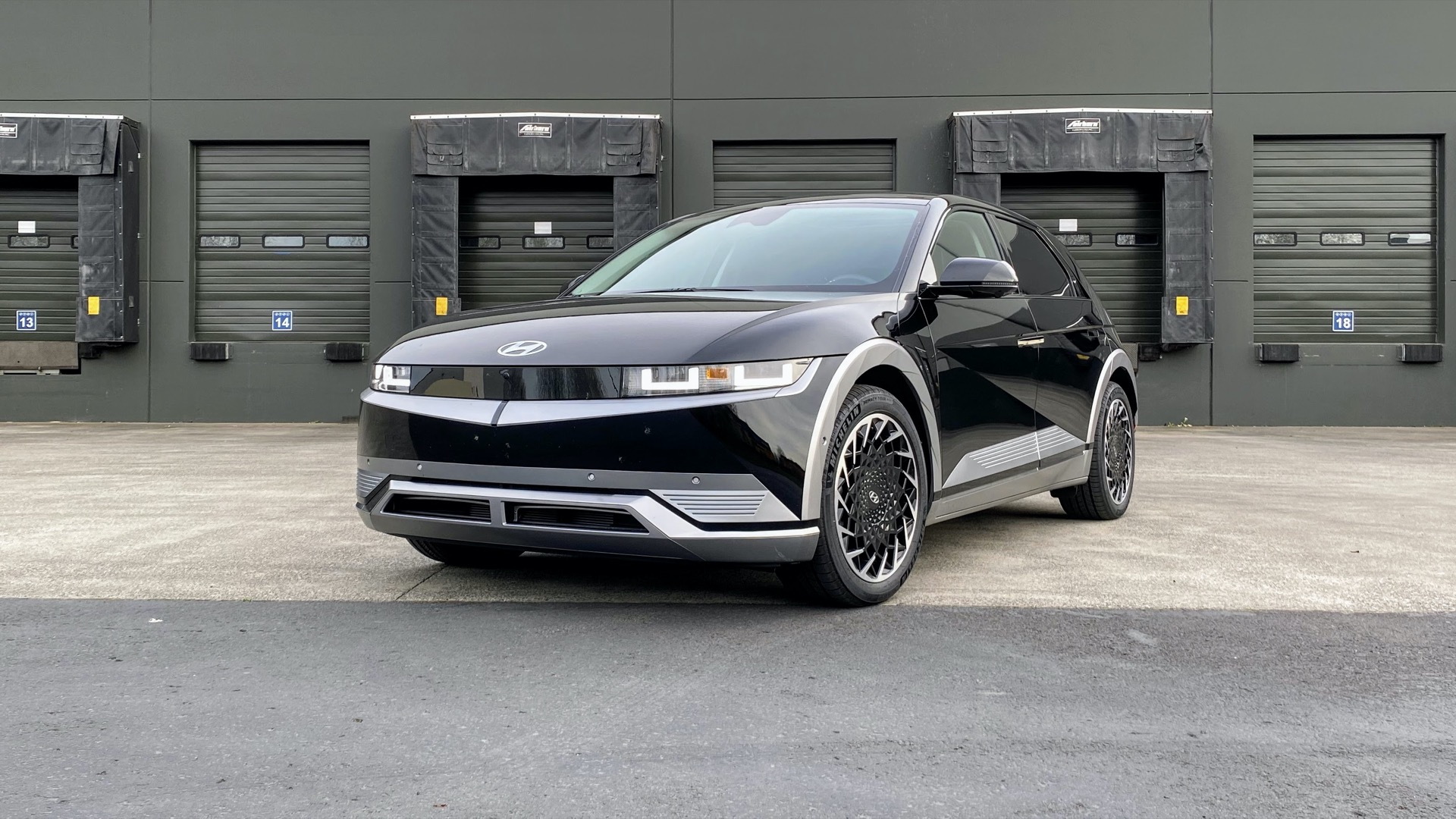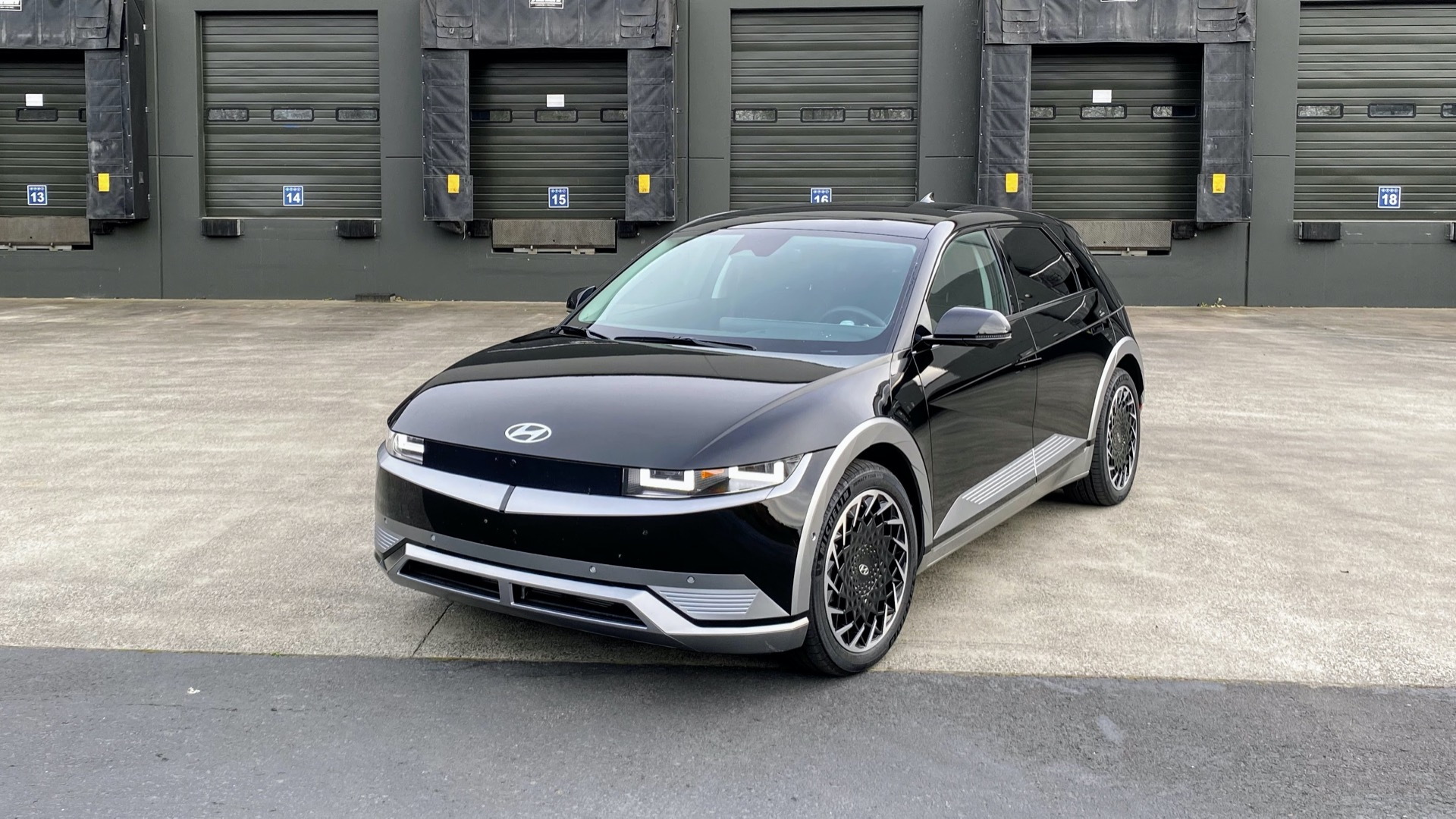Part of what makes the Hyundai Ioniq 5 and its close cousin, the Kia EV6, so noteworthy in the market is that they’re capable of taking advantage of 350-kw CCS connectors, and their faster-charging power levels allowed by 800-volt charging systems.
On those 350-kw connectors, in ideal conditions, that can assure a road-trip charge from 10% to 80% in just 18 minutes.
We’ve seen close to that, and it’s astonishingly quick. It and other vehicles that can utilize the increasingly common 350-kw connectors—including the Lucid Air, the Porsche Taycan, the Audi E-Tron GT, and the GMC Hummer EV—show that higher-power charging can be a game-changer.
That said, 350-kw connectors still aren’t that common. Map out your electric-vehicle trip around 150-kw connectors and it’s likely you have a lot more flexibility versus aiming for 350-kw connectors every time.
So… if we were to just charge at a more conveniently located 150-kw charger, would I really be giving that much up in time?

2022 Hyundai Ioniq 5 Limited AWD
The short answer: In the Ioniq 5 or EV6, probably not. Between these two models, I’ve already seen more than a half-dozen DC fast-charges, with only two of those charge sessions, on a nice warm day, at something close to the claimed time. Just under a half hour is more realistic from a 350-kw connector. (Note: Hyundai doesn't claim a peak power in U.S. spec, but I've noted 226 kw, briefly, as a max in what I've observed).
That happens to be, essentially, what I recently saw during a follow-up with the Hyundai Ioniq 5. On a 150-kw connector.
In charging this test car, a 2022 Hyundai Ioniq 5 Limited AWD—with the larger 77.4-kwh battery pack and a 256-mile EPA range rating—I don’t think I gave up any time in heading over to the 150-kw charger instead.
With ambient temperature at 68 degrees and relatively gentle driving just beforehand, I plugged into an 150-kw Electrify America connector at 8%. And it took just 15 minutes to get to 50%, with only 11 minutes remaining to get to 80%. And the shocking part was that, while I’ve noted erratic burst rates in 350-kw charging, the Ioniq 5 charged steady around 130 kw, working its way gradually closer to 150 kw as the pack warmed up to ideal.
Cooler or rainy? Probably not going to see fast enough to justify 350 kw
To throw another example into the mix. About a week later I revisited the Kia EV6, with the same size battery pack, and after more spirited driving but moister, cooler weather (49 degrees), plugging into the 350-kw connector got me from 7% to 80% in 31 minutes. Yes, actually slower. I saw lower power at first, then a burst to 202 kw, briefly at 35%, with power settling to just above 150 kw for the rest of the charge.

2022 Hyundai Ioniq 5 and Kia EV6 fast-charging - Lacey, WA

2022 Kia EV6 fast-charging
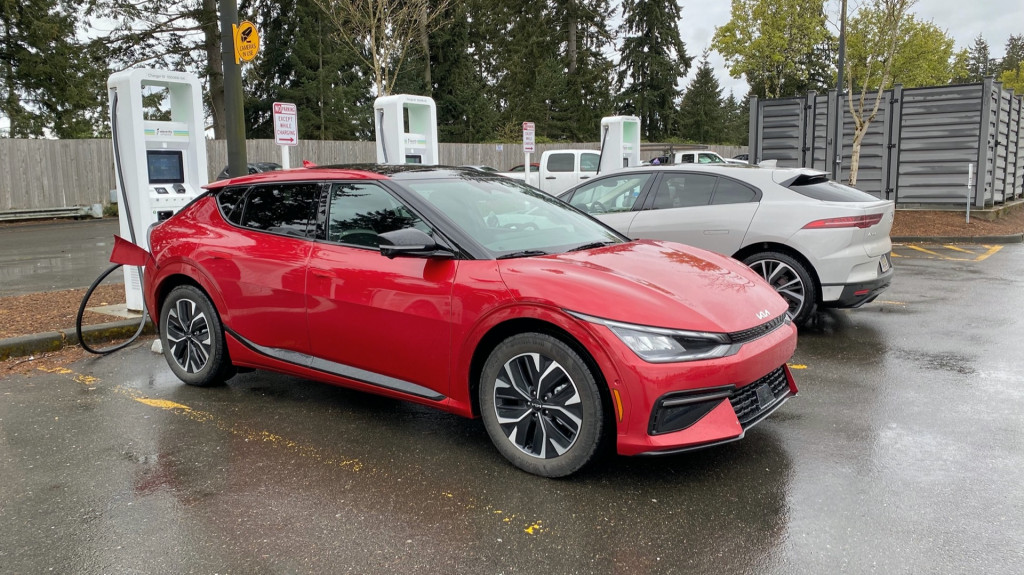
2022 Kia EV6 fast-charging
Yes, the ambient temperature probably had a lot to do with the slower pace. But unlike the 350-kw charges, the battery temperature doesn’t seem to need to be in a particular sweet spot in order to achieve close to the peak rate from a 150-kw connector.
Hyundai and Kia have talked about introducing a preconditioning feature and that might change things in the future, making that peak rate more widely accessible. But it's worth keeping in mind that even by official, ideal times, Hyundai quotes 25 minutes at 150 kw vs. 18 minutes at 350 kw.
Great efficiency, too
In my follow-up with the Ioniq 5, I found it to be nearly as efficient as I experienced in my Southern California first drive back in December. Over 70.7 miles (odometer checked), I averaged an indicated 3.8 miles per kwh in a mix of city and suburban driving, then over 141.4 miles of freeway driving—most of it near 70 mph, but in Eco mode—I averaged 3.3 miles per kwh. That points to highway driving right in line with the EPA range, and commute-style range likely to deliver something close to 300 miles in ideal conditions.
Just as in my first drive of the Ioniq 5, I loved the overall design and all the little design details throughout the exterior and cabin. The design simply pops in a way that few other modern ones do—and better than that of the related Kia EV6.
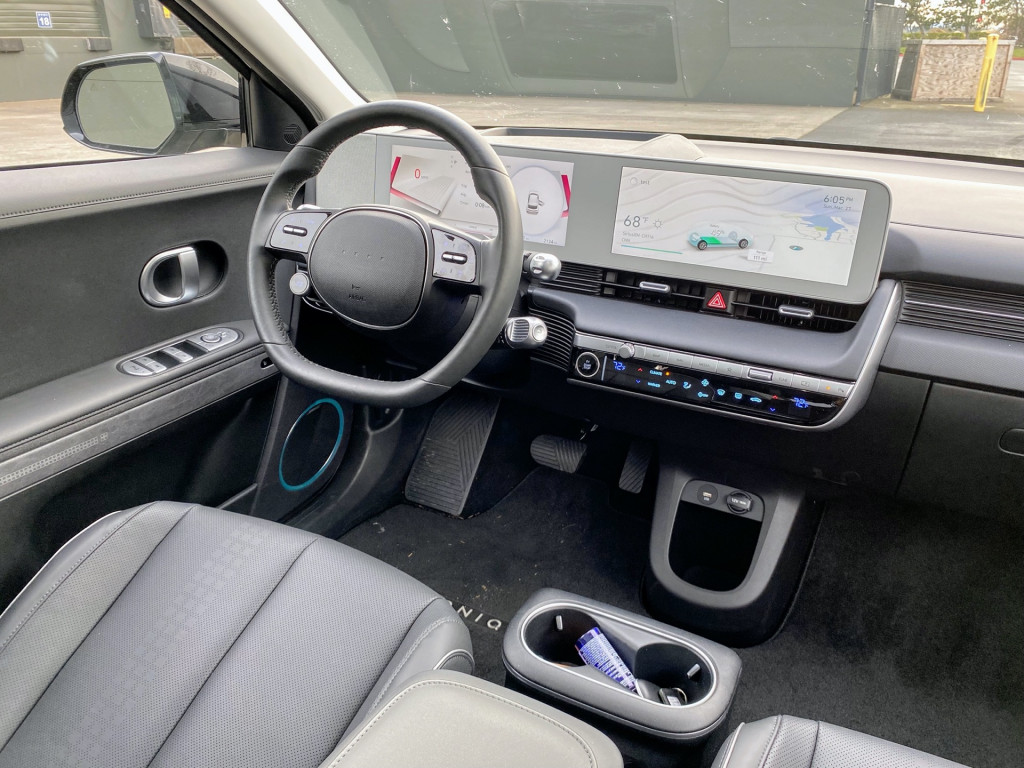
2022 Hyundai Ioniq 5 Limited AWD
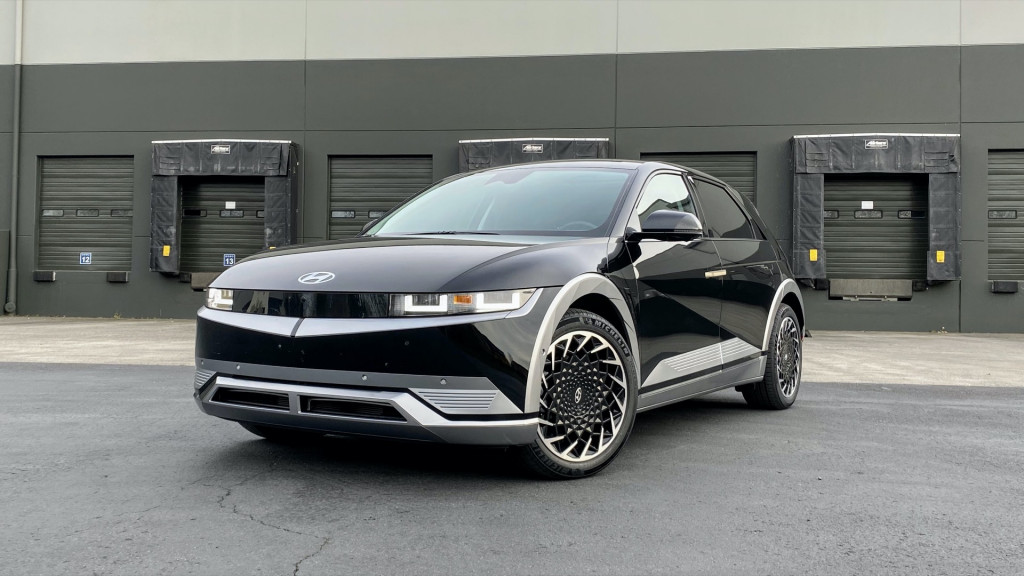
2022 Hyundai Ioniq 5 Limited AWD
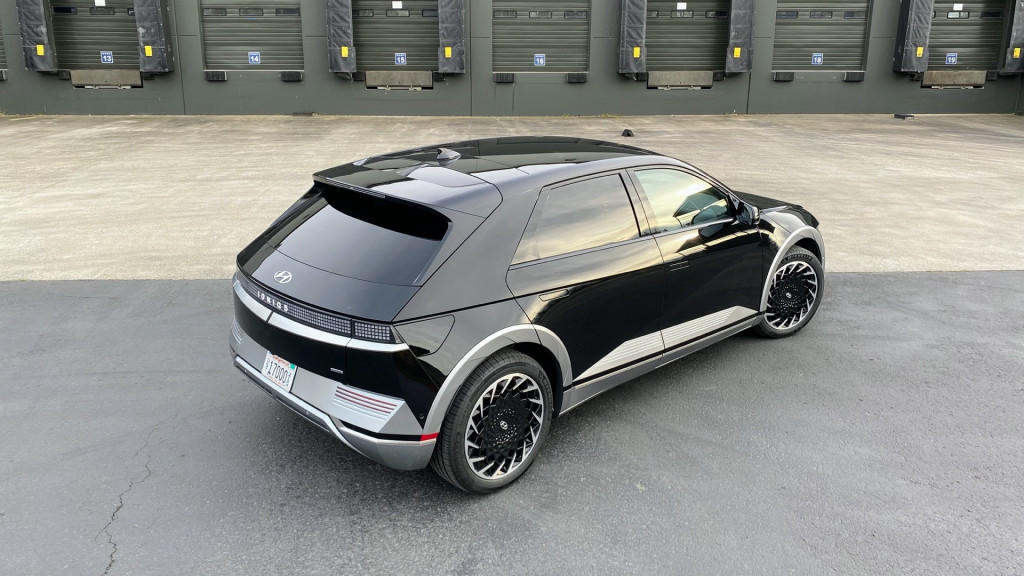
2022 Hyundai Ioniq 5 Limited AWD
I was less excited about the Ioniq 5 ride quality, though. The Limited, which rides on 20-inch wheels and Michelin Primacy Tour tires, carries some harshness through the sidewalls and then wallows with softness and body motion after big bumps. It’s not a combination that works particularly well on American roads—although in lower trim levels with taller sidewalls, it’s a more unified tune.
Other niggles that showed a bit more on the follow-up: The interior feels designed for wireless Apple CarPlay or Android Auto, only there is no such thing. That leaves cables dangling over to the driver or passenger in this otherwise conceptually brilliant wide-open front-seat space.
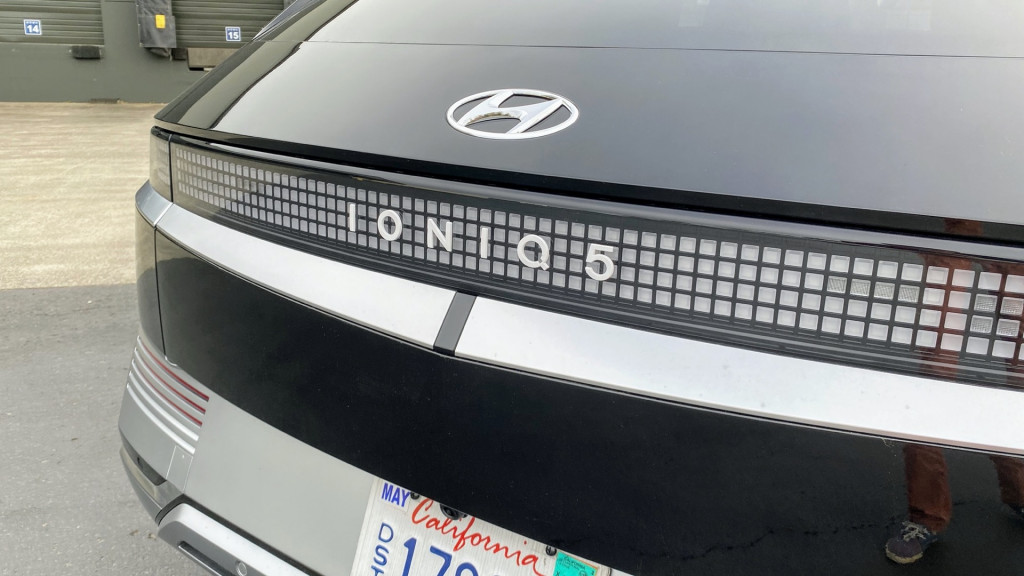
2022 Hyundai Ioniq 5 Limited AWD
I’ll follow this up soon with a roundup of real-world range and charging experiences for the EV6 and Ioniq 5, with more on the EV6 and how the two measure up versus each other. And in the meantime, whichever of these you might opt for, don’t go out of your way looking for 350-kw connectors.
